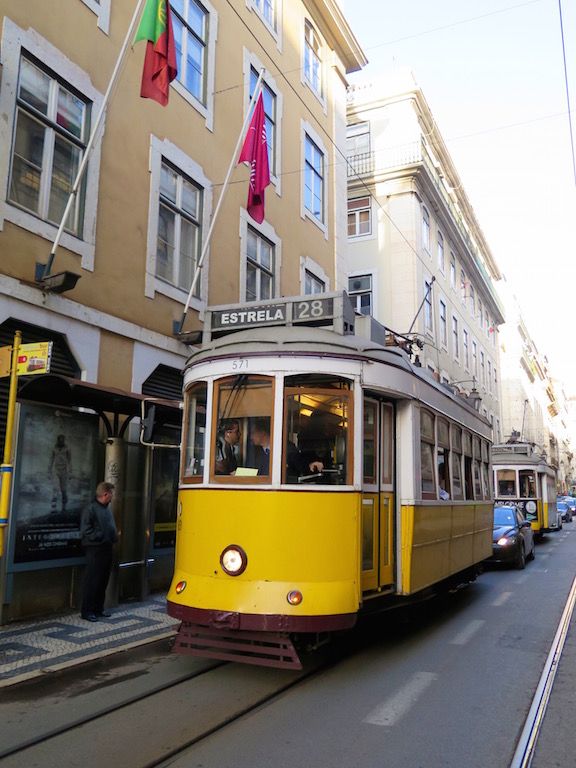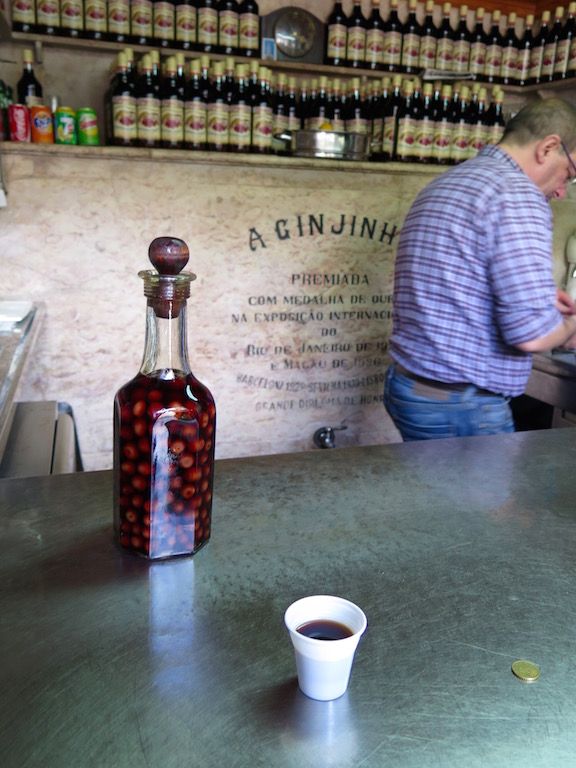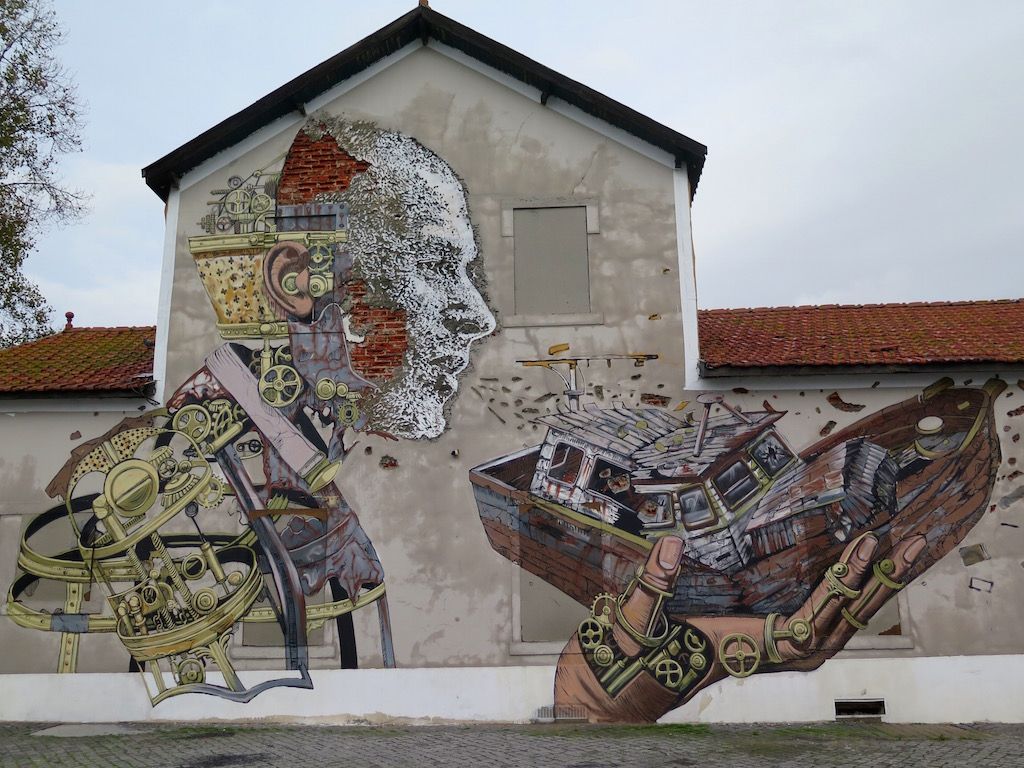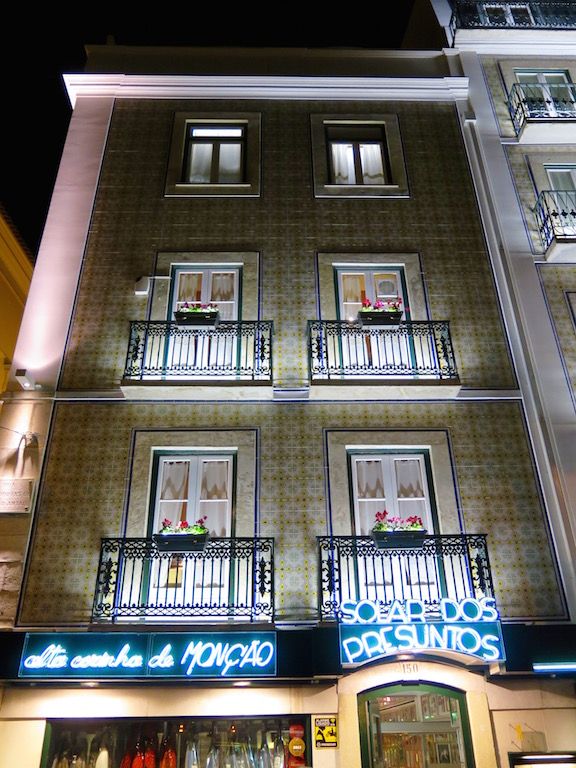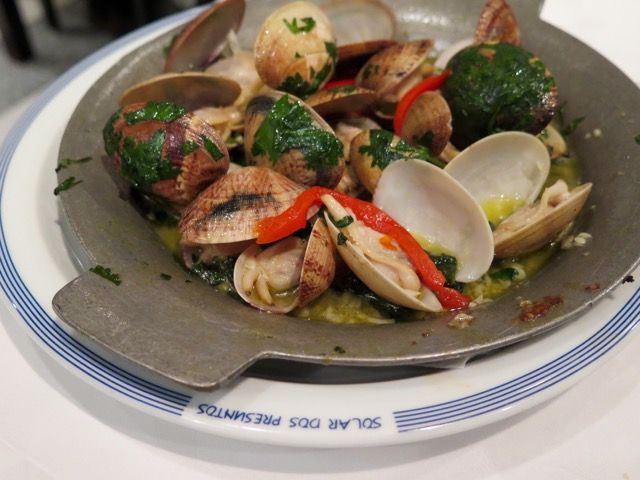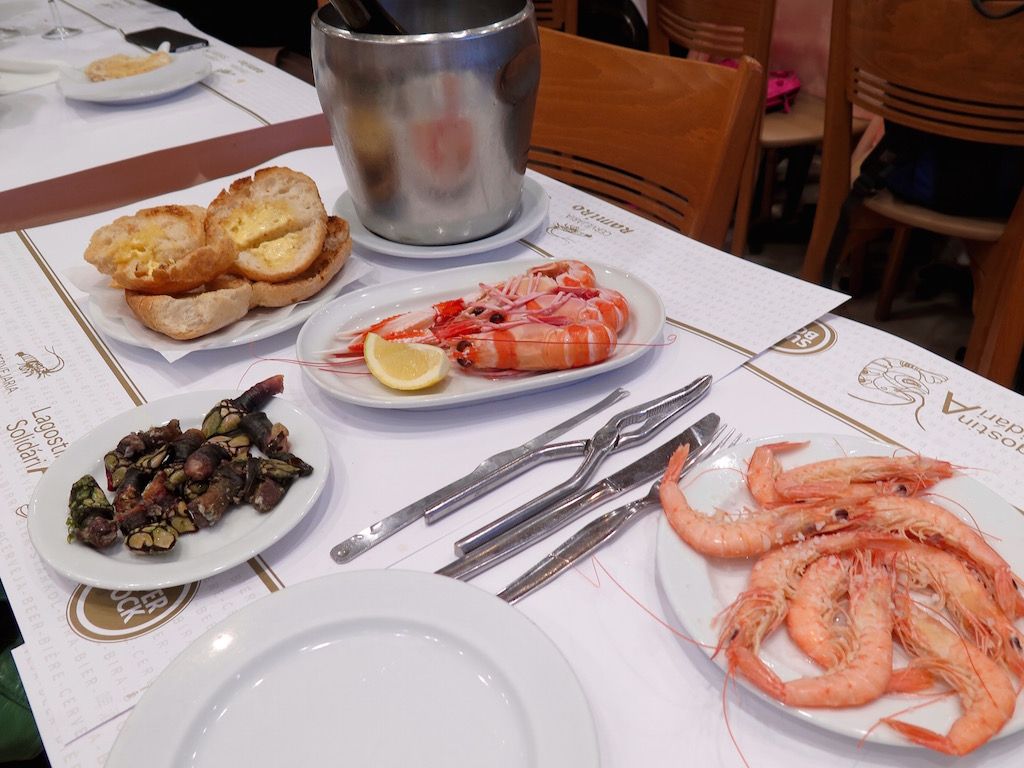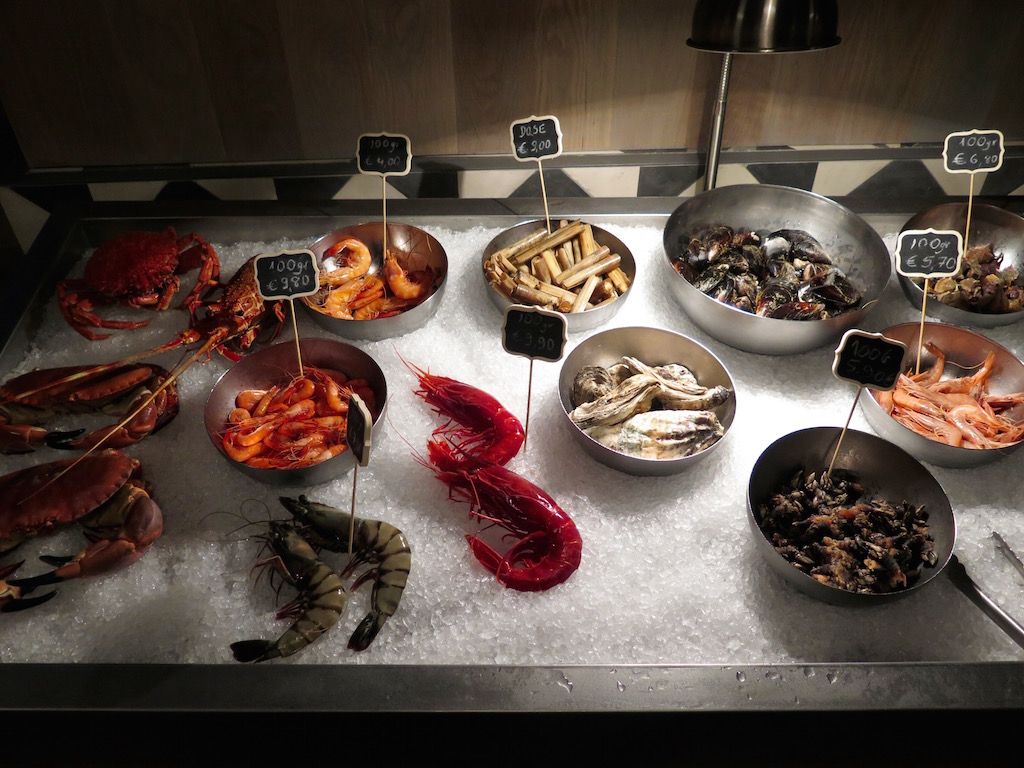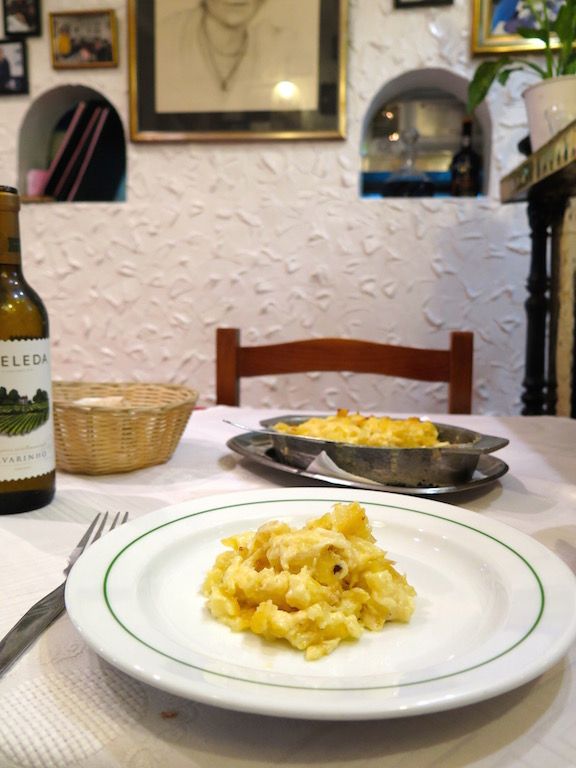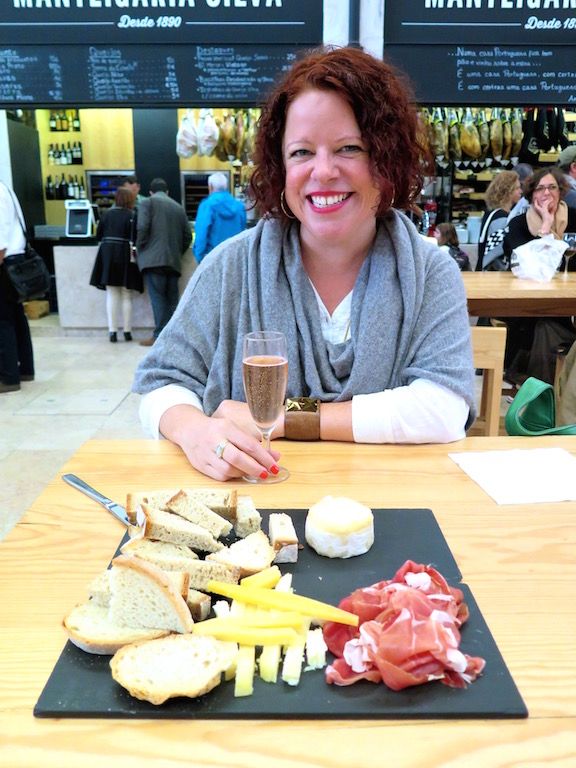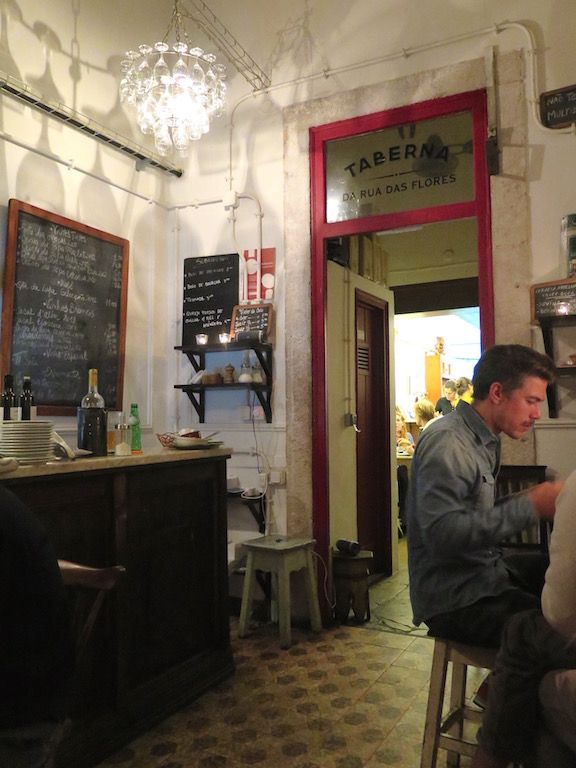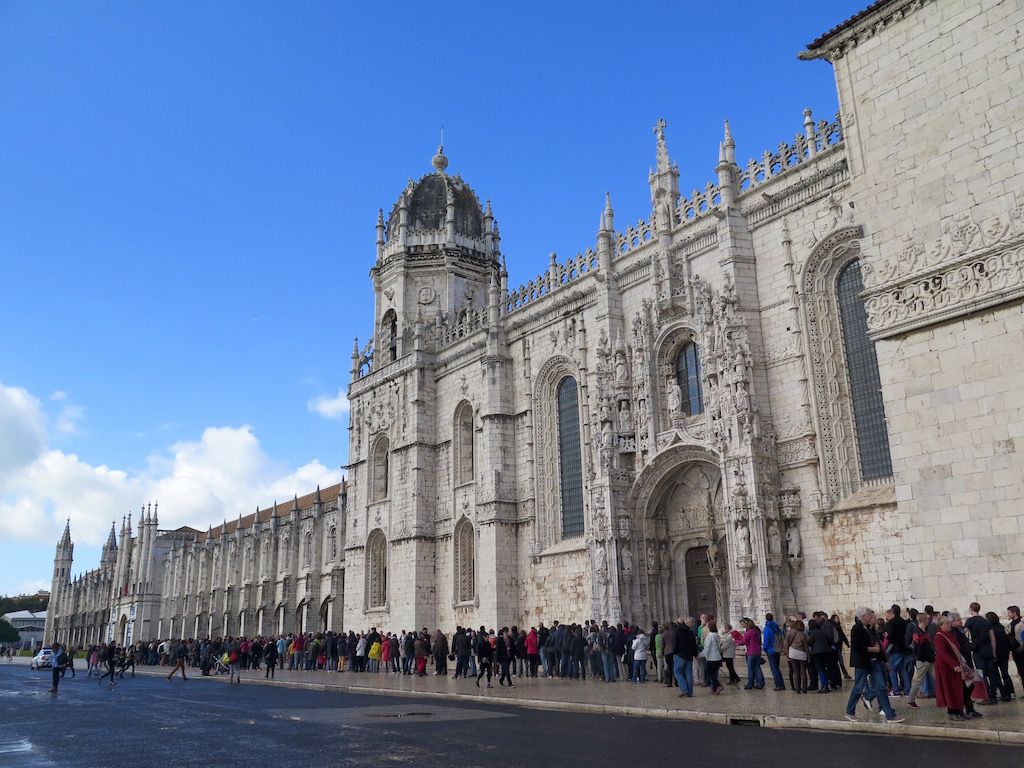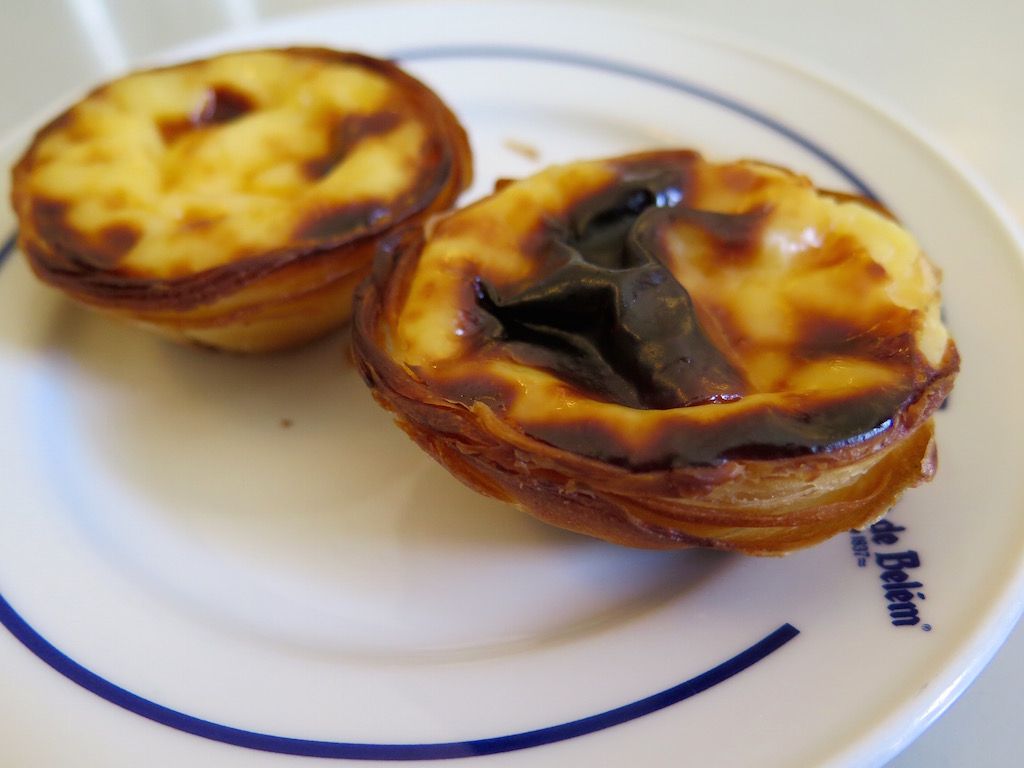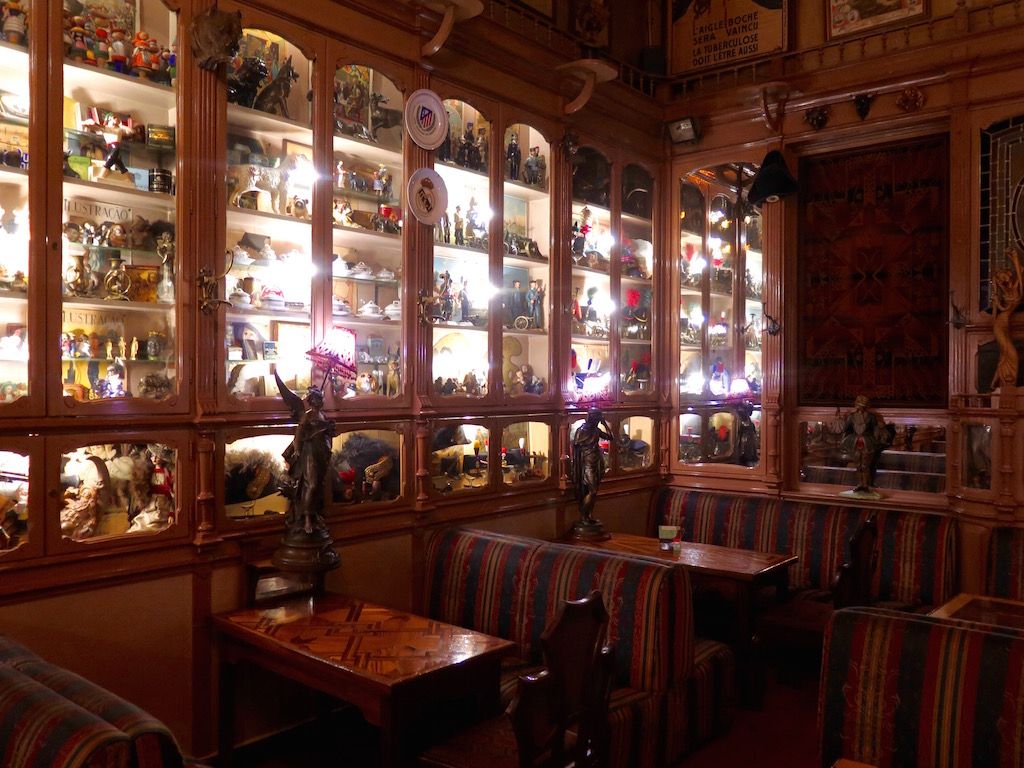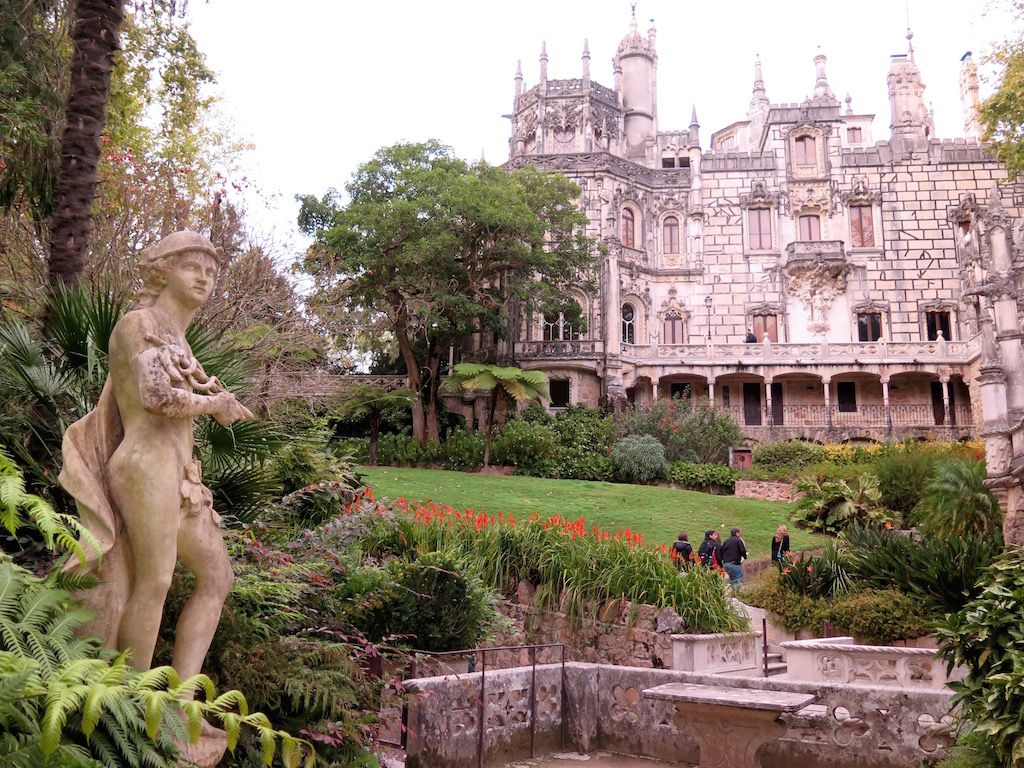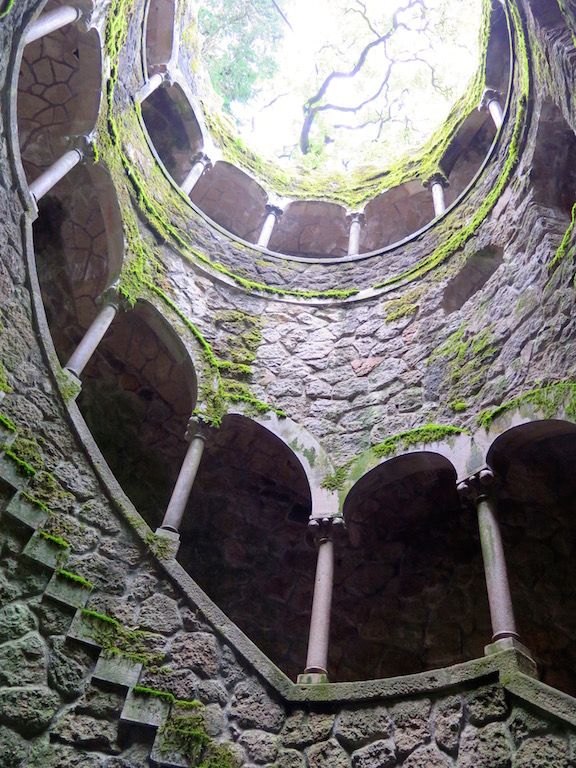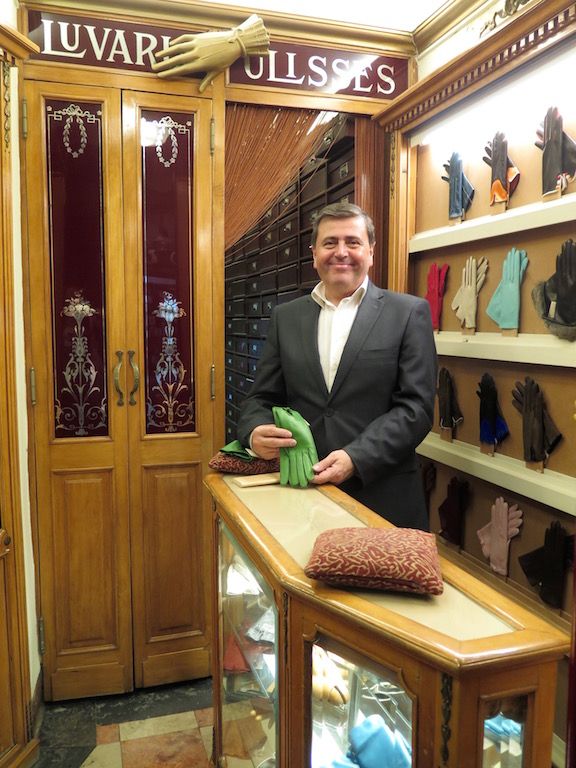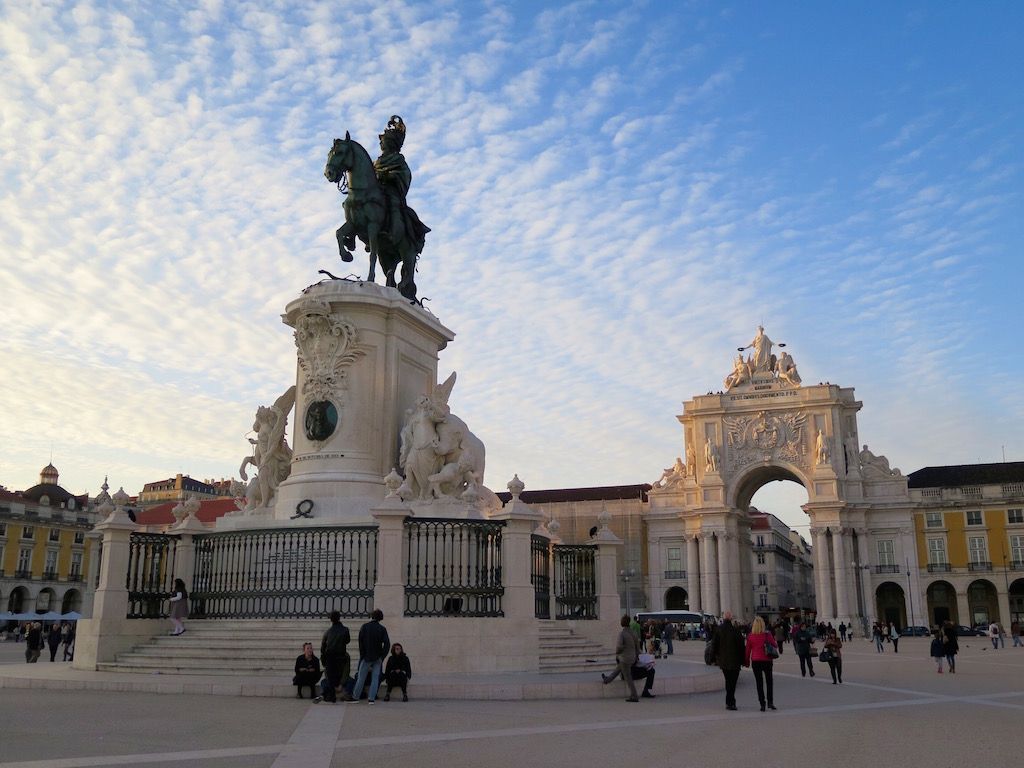I was invited to attend a five-day Portuguese wine tasting and education trip that was going to begin in Lisbon, and you can bet I was sure to fly myself out early. Lisboa, I really had no idea how cool you were going to be, and it’s partly due to the fact there aren’t that many people in my life who have traveled there. And you know what? That’s a big mistake, because this city is a full-on gem. Paris, Rome, Istanbul, Barcelona, they all get lots of love, but Lisbon is kind of like the quieter guy in high school who goes away to college for a year and returns home the next summer and is suddenly smokin’ hot—the charms were there all along, but it took you awhile to really notice them.
The city has a bunch of interesting parallels with San Francisco: it’s really hilly, full of cheerful yellow trolleys traversing the city like bumblebees, and with fresh air and beautiful light thanks to its proximity to water. The compact size feels comparable. There’s the 25 de Abril Bridge which, like the Golden Gate Bridge, is a suspension bridge and is funnily enough painted a color very similar to our bridge’s International Orange. Every time you see it, it feels like you’re back in SF for a split second. And then there’s the shared tragic history of getting wiped out by a major earthquake—the majority of Lisbon had to be rebuilt after its 1755 earthquake (there was also a fire, and fortunately we didn’t have a tsunami like they did).
Where Lisbon really has us beat is how old it is—we’re talking roots in pre-Roman times—and then subsequent layers of civilization on top of it. The architecture here is so rich, and everywhere you look, there is such beauty, from all the vintage Deco lettering to buildings covered in alentejos (the classic blue tiles) to the pavimentos (slippery cobbled streets, with larger designs in city squares, just like you see in Rio). So much old-world craftsmanship, everywhere.
It’s a city built for wandering, full of winding streets and stairs and vistas, and you’ll suddenly happen upon a group of people gathered around the little A Ginjinha stand, a famous place known for its liqueur made with sour cherry, or a bakery that’s over 100 years old. I dug the grittiness, the incredible graffiti and street art (including some really cool neon pieces and mind-blowing pieces by Vhils), and how easy it was to get around. Although when it’s absolutely dumping down rain, you’re going to want to find a café to hang out in—I couldn’t believe how much water filled the streets during an evening downpour.
The city is also shockingly affordable: I rented a top-floor apartment in the charming Chiado neighborhood for $110 a night, with a breathtaking view of Castelo São Jorge (thanks, Airbnb!), and taking a cab around was crazy cheap (this is what happens when you leave San Francisco—you suddenly see how much you’re overpaying for everything). When I had my first meal and got my bill, I almost laughed at how little my glass of wine cost—I’m talking 3 euros. The Portuguese definitely know how to encourage you to drink a lot of their national product. And I did.
And let’s talk about the food. If you love seafood, this is your place. I had some of the best seafood of my life, and there’s nothing like wonderful hospitality to make food taste even better. Dining solo can be awkward in some cities, but I was treated quite kindly and warmly almost everywhere I went. It helps to have some basic Portuguese down, do your best.
Some favorites (and be sure to check out my photo album on Flickr:
Solar Dos Presuntos
This place is absolutely steeped in history, in regulars, in famous people—it’s like an Elaine’s of Lisbon (since 1974), with the walls of the two-level space covered in caricatures of politicians, stars, and athletes. I had plenty to look at in between making eyes at course after course of deliciousness. They serve thinly sliced Joselito presunto on a piece of lightly warmed slate, so the fat starts to melt. You will die. The huge fish tank when you walk in is also a clue to what you want—it’s all about seafood and classics here. I had the juiciest clams (almejas à Bulhão Pato) in a garlicky white wine broth, and perfect arroz with juicy prawns and lobster. My server made some great pairing suggestions, and dessert is death by the toucinilho (i.e., flan extreme) and a glass of moscatel roxo.
Cervejaria Ramiro
Yes, Andrew Zimmern and Anthony Bourdain have blown the lid off this classic seafood spot that has been open since the 1950s, but it’s damn special. I wandered in there in the midafternoon, and very luckily only had to wait 20 minutes for a seat at a table. I was sandwiched in with couples, families, lots of locals, and some happy tourists, the paper tablecloths quickly covered in crumbs from the buttery bread in front of every guest.
Luckily I could order smaller portions of seafood (by the kg) and proceeded to have my dream lady feast of percebes (finally got to try these dinosaur paw-looking barnacles, and the host was kind enough to show me the best technique for eating them), stunning deepwater shrimp (gambas do Algarve) in rock salt, and sweet langoustines. (Even with my bottle of vinho verde, my entire check came to €46, amazing.) As you can gather by the name, most people are drinking beers, which will go well with your “prego” at the end: a garlicky steak sandwich that is traditional to eat at the end of your meal. I know, what? I was too full to even attempt it. This place was full of soul—so many locals and regulars, and they treat everyone like family. Warm fuzzies.
Cervejaria do Bairro
For a more modern and sleek take on a cervejaria, check out this newer spot in the Bairro Alto neighborhood. There was an array of fresh seafood, like razor clams, clams in white wine, Algarve prawns, and percebes—all elegantly displayed on ice—plus plenty of small plates like croquettes and gorgeously sliced pata negra de Bellota to round out your meal. There’s a bar as well (good for solo diners), but this place is great with a group.
Cantinho do Avillez
During the wine portion of my trip, we were hosted for dinner at this restaurant in Chiado, a relaxed bistro from chef José Avillez (of two Michelin starred Belcanto fame). We started with some mighty tasty appetizers (fried green beans, baked “Nisa” cheese with honey), although for some reason they chose to serve us their prego (steak sandwich) for our main course, so I can’t comment on the larger dishes, but the menu looked really appealing (and affordable). It’s one I’ll come back to, as well as his newly launched Mini Bar, serving serious snacks and canapés.
A Baiúca (Rua da Barroca No. 86)
My first night, I wandered to a nearby spot a friend recommended (Tagide), but sadly they were closed for a private function. But the host steered me to this homey and no-frills place in the Bairro Alto neighborhood, with the walls covered in art and years of memories (a mother and daughter have run the place for 40 years). The guy from Tagide had even called ahead to give them a heads up that I was arriving (which was revealed to me later). Adorable. My swishy server Isidro melted me with his sassy charm while I got my Lisbon home cooking groove on with bacalhau roasted with cream, potatoes, and onions. (There are a bunch of bars and fado spots nearby that you can visit when you’re done with dinner.)
Time Out Mercado da Ribeira
Oh dear lord, this place was a glutton’s dream food court. Time Out magazine helped to reinvigorate this old food market in 2014, which now features 35 kiosks with everything from Portuguese cheeses (try the buttery Azeitão and Ilha) to cured presuntos (hams) and charcuterie, croquettes, Santini ice cream, chocolates, and classic dishes. Some top restaurateurs have stands selling affordable dishes, like Alexandre Silva and Vítor Claro. One stand even serves the famous francesinha/”frenchie”—which isn’t from Lisbon, it’s from Porto—but I was so happy to be able to try the insane hangover-curing sandwich stuffed with sliced and roasted meats covered in melted cheese and a tomato and beer sauce, what the hell!
You’ll find beers, wine, and be sure to swing by the Garrafeira Nacional wine shop if you want a bottle of Madeira from your birth year. A great souvenir are the tins of sardines, mackerel, and more in colorful packaging from Conserveira de Lisboa. The mercado has a modern look to it, with plenty of communal seating—but note that it gets really busy on the weekend. Come hungry and with friends so you can share and eat your faces off.
Sea Me
This casual place was recommended to me by a tablehopper reader, a modern-sushi/fusiony seafood spot, which came in handy while I was waiting for a table at Taberna da Rua das Flores around the corner (in Chiado). The menu has sushi and sashimi, which is not what I came to Lisbon to try, but I really enjoyed their smoked sardine nigiri while I was at the bar, and the cuttlefish tempura with squid ink.
Taberna da Rua das Flores
This cozy little tavern is full of vintage flair, with tiny tables and rickety stools and old tiled floors, with an eclectic menu that they will bring over to your table on a blackboard. The cooking from chef André Magalhães was soulful and playful (you’ll find some international ingredients and references), and even though I really wished I was on a date in that atmospheric and candlelit room, I kind of had the best date with myself possible. The rotating menu features dishes like a tiradito of corvina, veal ribs, and other flavor-packed small plates. No reservations, so expect a wait, but fortunately you can drink some wine on the street until your table is ready.
One funny thing about the restaurants here: some of them will put out a bunch of little plates, ranging from olives to cheese to bread and butter to ham, which you will pay for as part of a cover/couvert fee, ranging from a couple of euros to a cuttlefish salad that was placed before me for €6. You can politely decline the ones you don’t want and they’ll whisk the dishes away, no problem.
At some point you should pay a visit to the Jerónimos Monastery, an enormous structure in a Portuguese Late Gothic Manueline style in the parish of Belém, which has the tomb of Vasco da Gama. While you’re there, you can thank the monks for creating pastel de Belém (pastel de nata), that utterly exquisite egg custard tart that has made its way around the world (the wonders of colonialism). It ends up the monks and nuns were using a lot of egg whites to starch their clothes and needed to figure out a use for the leftover egg yolks. Presto: the pastel de nata.
Once you’re done checking out the monastery, like everyone and their mother, you have to walk over to the famous Fábrica de Pastéis de Belém, which has been making pastéis de nata since 1837. While I was in Lisbon, I was admittedly trying pastéis de nata every day (yes, the plural form), but not one came close to the construction and flavor of these flaky and custardy beauties from the mother ship. Don’t worry about the line (well, unless you want to get them boxed to go). Just go hover for a table, eat a couple of these still-warm beauties with your coffee (be sure to sprinkle them with cinnamon), and go to heaven. (Check out this fascinating article for more about this treasured item, which they reportedly sell 50,000 of on Sundays.)
It was a bummer it was just too cold and rainy for some of the city’s awesome rooftop bars I heard about, this is what happens when you travel in November, but I can imagine places like Park are so fab on a summer night.
On the last night of our wine trip, we literally stumbled into one of the most amazing bars of my life, Pavilhão Chinês (Rua Dom Pedro, V 89). I have never seen anything like it, and it will be the first place I return to so I can make sure it was real. What started as a grocery store at the turn of the century was transformed into an antique shop, and soon thereafter the owner turned it into a bar. You’ll encounter a warren of rooms, each one filled with treasures in floor-to-ceiling vintage shelves and cabinets. There are little tables where you can sit, served by waiters in brightly colored vests, and then there’s the pool room in the back. You won’t even believe the room overflowing with old soldier memorabilia and war toys. There are details in every corner and square inch—even the ceiling is something to behold. One of the most magical places ever, and I’m so glad it was the last place on my trip, what a send-off.
One of the best things I did on this trip was hire a guide, and fortunately I had a recommendation from a friend to hire Pedro Ferreira of We Are Lisbon Tours, who took me around for a couple of days. I was able to cover so much more ground, and with his background in art history, I learned a bunch about all the beautiful buildings and artwork and history of the city, and Pedro also took me to see some really amazing street art.
Bonus: he was as happy to go to the flea market as I was, and like a good Portuguese, was obsessed with good food, so he took me to some cool local spots for coffee, pregos, pastries, and more. He was also able to give me some real talk about the economy, the difficulties in the local job market (and why so many young people move away), and we had a blast talking about music and nightlife. My two days with him made my trip—it was like hanging out with a friend.
Even if you don’t hire Pedro to take you around Lisbon, you really should consider hiring him for a day trip to Sintra, a UNESCO World Heritage site that is about 20 miles outside Lisbon. You simply have to visit this dreamy and almost unbelievable place, full of palaces from the 20th century and earlier. My favorites were the Pena National Palace (a summer residence of the monarchs of Portugal during the 18th and 19th centuries) and the utterly mystical Palácio e Quinta da Regaleira, which the Freemasons used in the 20th century (this place is such a head trip, and do not miss the underground staircase!).
While you’re in Sintra, be sure to visit the Piriquita Café, famous for their travesseiro pastry (its name means “pillow,” which gives you a clue to its shape), with almond pastry cream inside. You can also try their queijadas, which are much less sweet (and easy to take to go).
Back in Lisbon, if you love tiles and find yourself getting more and more obsessed with the azulejos around town (it happened to me), pay a visit to the Museu Nacional do Azulejo (National Tile Museum).
Don’t miss the opportunity to be fitted for the most fantastic handmade leather gloves at Luvaria Ulisses, a total jewel box. The entire visit is such an experience. Since 1925.
It was pure luck that I was walking around the Praça do Comércio at dusk on a rare sunny moment when there was a break in the storm. The magic hour light was incredible, it actually brought tears to my eyes. It wasn’t until later on that I learned Lisbon is referred to as “the luminous city” and “the white city.” Indeed.
Be sure to check out my photo album on Flickr—the beauty of Lisbon will blow your mind.
